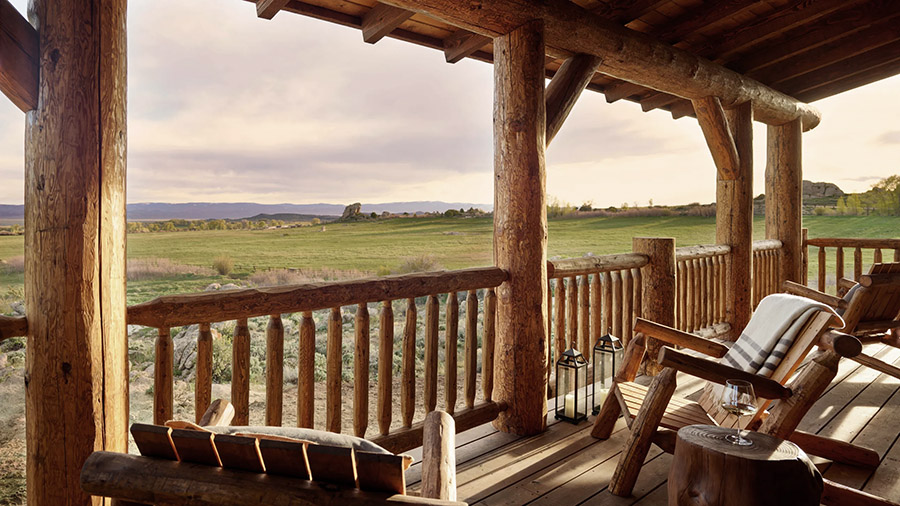DestiMetrics, the Business Intelligence division of Inntopia, reported a slight tweak in aggregated rates at Western Mountain Resorts over the past 30 days, creating an appreciable uptick in occupancy for most of the summer months in a notable pattern shift from the previous six months.
The company said the positive news for lodging properties and consumers represented the strongest booking pace in over a year and a return to more predictable pre-pandemic patterns for day-of-the-week arrivals.
The findings were reported in DestiMetric’s monthly Market Briefing, reviewing the most recent data collected through May 31 from 17 western mountain destinations.
May Revved Up With Exception of Memorial Day
Compared to last year, occupancy for the month was up 8.3 percent compared to last May, with the Average Daily Rate (ADR) in May up 4.4 percent, and, when combined, revenues for the month were up 13.1 percent. The only downturn was for the three-day holiday weekend from May 25-27, which posted a 2.2 percent dip in occupancy.
Summer Pace Increases
Occupancy for the six months of summer is up 3.8 percent year-over-year compared to the same time last year, with gains posted in five of the six months and only October showing a decline. And, after several years of steadily climbing rates, sometimes significantly, ADR is up only a moderate 1.8 percent compared to last summer, with increases in five of the six months, and with July the only month posting a decline, down 1.1 percent compared to last year. However, that 1.8 percent seasonal rate gain is a notable decline from one month ago when the year-over-year ADR comparison was 4.3 percent. Destimetrics credited that subtle dip in daily rates with the uptick in occupancy and the increase in occupancy and rates, delivering aggregated revenues up 5.8 percent over last summer.
“What a difference a month can make,” observed Tom Foley, senior vice president for Business Intelligence at Inntopia. “One month ago, we were tracking flat or declining occupancy levels, daily rates that were outpacing inflation, and a virtually flat booking pace compared to the previous April,” he continued. “But in the past 30 days, we saw lodging properties ease back on room rates, just enough to keep them above flat but below inflation, and that has created the incentive for travelers to ramp up their bookings. The result we’re seeing is a healthy gain in occupancy that is boosting revenues for lodging properties.
Lively Booking Pace Moves The Needle
Bookings made during May for arrivals from May through October led to a strong 26.5 percent gain in the May booking pace volume compared to May 2023, the strongest booking pace recorded since May 2022. The company recorded increased bookings for all summer months, ranging from a 9.3 percent gain in bookings for September arrivals to a 48.5 percent gain for October arrivals.
Economic Indicators Mixed In May
The month’s most closely watched and vital economic statistic was the Consumer Price Index (CPI) report released yesterday. The National Inflation Rate declined for the second consecutive month during May from 3.4 to 3.3 percent, and overall prices were unchanged from April. This is the first time prices have remained stable month-over-month since October 2023. The employment data from the Bureau of Labor Statistics also indicated that wages increased 4.1 percent during May based on annual measurements, and this combination of good news has the potential for a positive consumer response in the coming weeks. These two figures are credited with playing a role in May’s robust booking pace.
After a rough ride back in April, the Dow Jones Industrial Average (DJIA) recovered in May by adding more than 870 points to rise 2.3 percent. Amid this mercurial month, the DJIA managed to set the single all-time high close at just over 40,000 points for the first time on May 17 before retreating by the end of the month to 38,686.32 points.
The Consumer Confidence Index (CCI) and the Consumer Sentiment Index (CSI) moved in separate directions in May, with the CCI edging up and the CSI moving down. The CCI rose 4.6 percent to reach 102 points and, marking the first gain in the index since January, although consumers remain concerned about persistent inflation.
Easing food and grocery prices were credited with the improved outlook, although respondents continue to expect higher interest rates in the months ahead. In contrast, the University of Michigan’s CSI declined a notable 8.1 points to reach its lowest level since last November and reflects concerns about the labor markets as unemployment is expected to tick up while income growth is expected to slow.
Once again, the national unemployment rate increased from 3.9 percent to 4 percent, reaching its highest level in January 2022. The biggest surprise was the unexpectedly large number of new jobs created (272,000), which was far more than forecasted and suggests that the job market is still a negative factor as the Federal Reserve Bank is considering whether to start easing interest rates in the near future.
The Leisure & Hospitality sector added 42,000 new jobs last month to surpass their 12-month average, with 17,000 of those in the Accommodations sub-sector, allowing lodging properties to move towards a higher capacity for occupancy with a larger workforce.
“We can’t overstate the importance that markets play in summer booking patterns for mountain destinations,” noted Foley. “When snow isn’t part of the equation—in other words, summer—consumers think differently about what is or isn’t an incentive. With consumer confidence firmly in the doldrums for the last two years, mostly because of prices, the lower inflation and steady prices this month are likely to combine with the higher wages to help boost spending on travel,” he suggested. “We’ve seen some of that occur in May with just a modest rate adjustment, and some support for consumers can go a long way to making a season thrive.”
Image courtesy Brush Creek Ranch
















